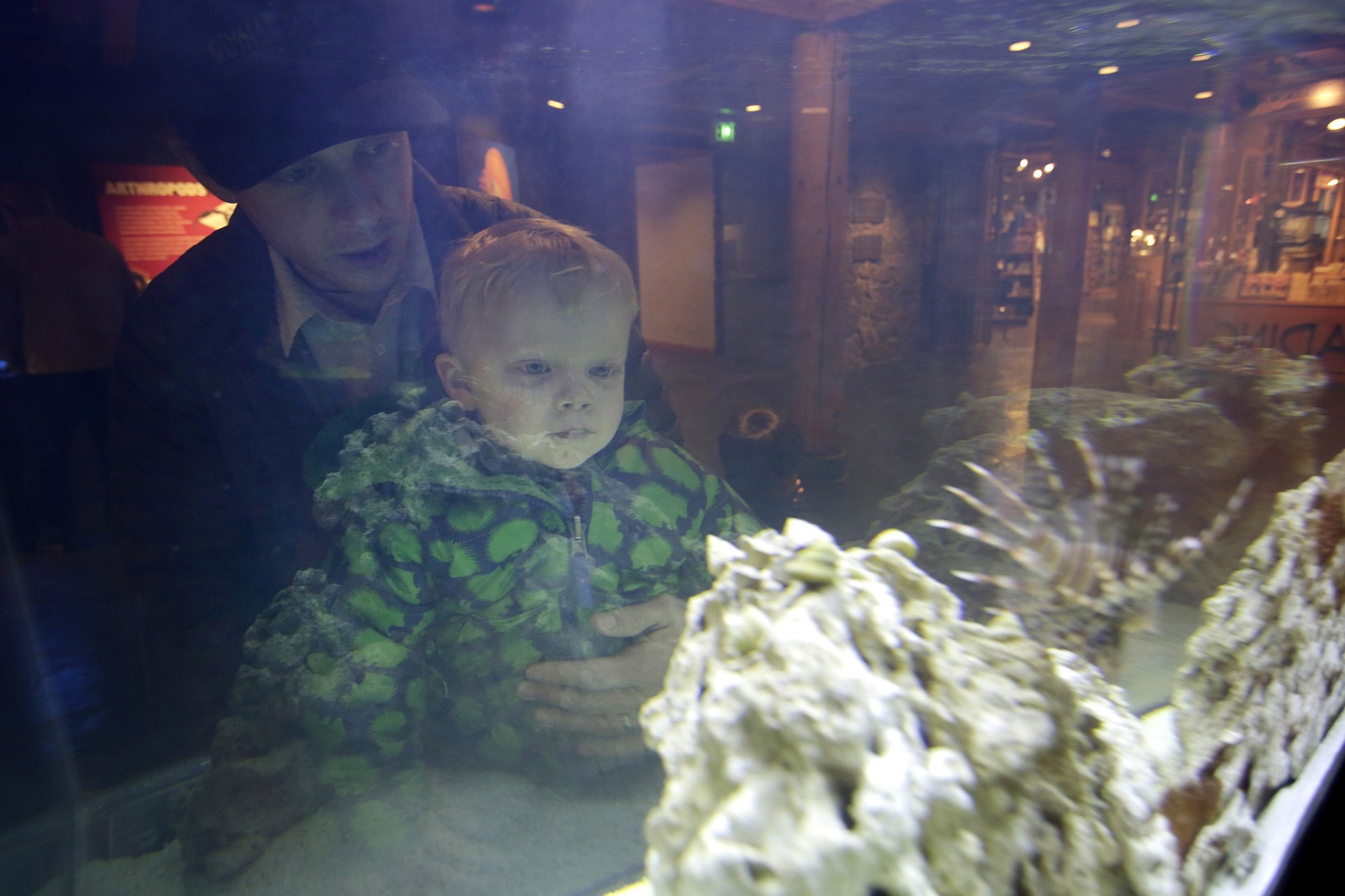BEND, Ore. — A menagerie of poisonous animals has clustered south of Bend, about 5 miles north of Lava Butte. Despite the presence of some critters that could end a human life with one strike, Quentin Hein, a first-grader at Pine Ridge Elementary, said on a recent Sunday the beasts aren’t “too scary.”
“I really like the underwater sea creatures,” he said, gazing up at a lionfish, a carnivorous fish armed with venomous spines.
The animals, safely encased in glass tanks, are part of an exhibit that recently opened at the High Desert Museum, titled, “Deadly by Nature: Venom and Poison.” For those not in the know, venomous and poisonous are not synonyms. Poisonous animals can cause harm to a predator that happens to eat them or just nibble on an appendage, while venomous animals actively inject or spray their poison.
Most amphibians are poisonous, for example, but the Spanish ribbed newt, one of the animals in the exhibit, is one of just a few venomous amphibians.
“It’s like a real world Wolverine from ‘X-Men,’ ” said Jonathan Brower, an associate curator of wildlife. “It can stab you with a toxin-coated rib which pierces its skin, and then the hole regenerates.”
Caring for the collection, which also includes a rose bubble-tip anemone and a Vietnamese centipede, is “quite exciting,” said Louise Shirley, an assistant curator. “We use reinforced gloves, which are puncture-proof, ideally,.
The exhibit is unusual for the High Desert Museum, which typically focuses on the region’s flora, fauna and history.
“We did go out and try to do something global,” Brower said. “There’s just so many cool animals out there, and poison is pretty common, and we wanted to educate people on the diversity of forms it can take.”
A visitor may be surprised to see the bearded dragon included in the collection. The Australian species is a popular pet, but in 2005, it was discovered the lizard is actually venomous. When the lizard bites its prey, it secretes a venom similar to that found in rattlesnakes. Unlike the toxins found within a rattlesnake, the bearded dragon’s are much more mild, so a careless owner need not rush to the hospital if they get a small bite.
Although a lot of the species may be native to places halfway around the world, many of them simply had to travel over the Cascades to end up in Central Oregon: Some of the specimens are on loan from the House of Reptiles in Tigard.
The exhibit is open until June 28.



